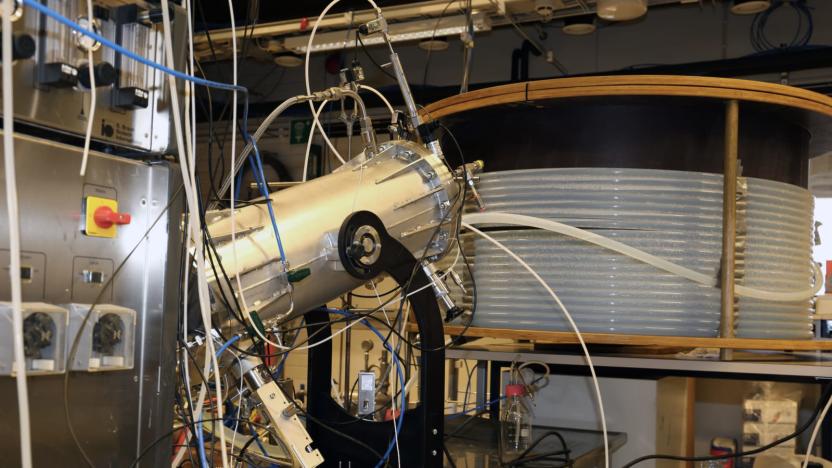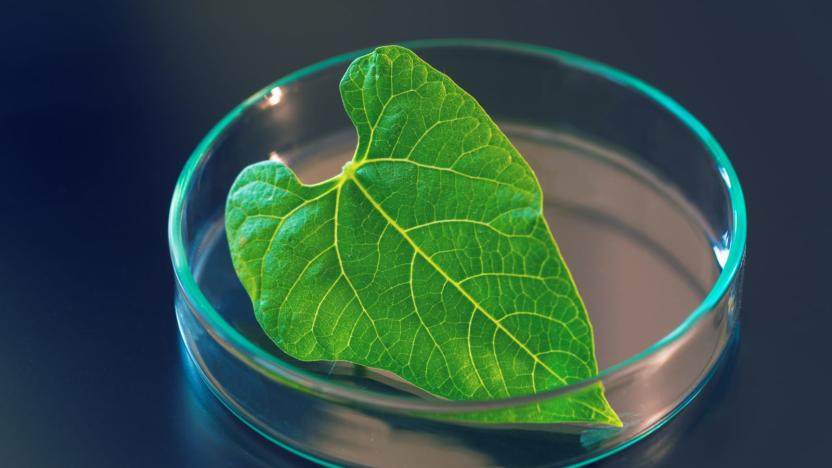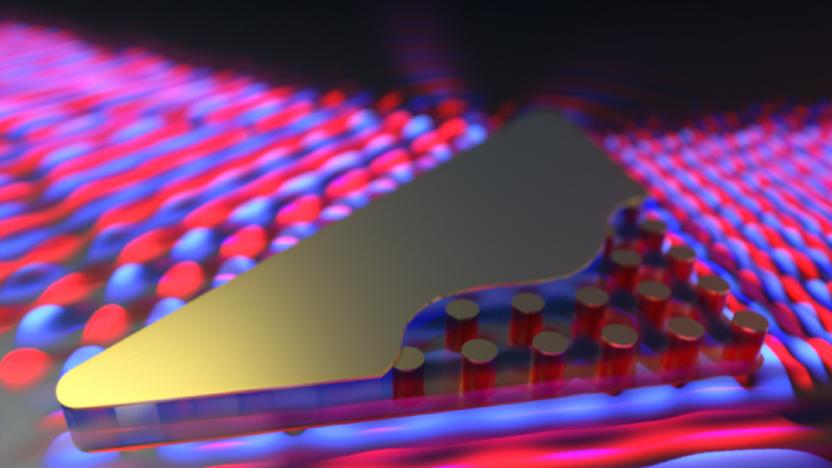TL17SCINZ
Latest

Researchers create instant hydrogen from water and aluminum
Hydrogen power seemed all the rage for awhile, until we had to face the practical considerations of using it. Yes, it's clean and abundant, but it's also incredibly difficult to transport. One team may have accidentally found the key to jump starting this struggling economy, though; researchers at the US Army Research Laboratory at Aberdeen Proving Ground Maryland made a chance discovery when they poured water on a new aluminum alloy. It began to give off hydrogen automatically.

Scientists want to create animal feed out of light and electricity
Figuring out how to feed the Earth's population is no small feat, which is why a recent development is so exciting. Researchers at the Lappeenranta University of Technology and VTT Technical Research Centre of Finland have figured out a way to produce single-cell protein from electricity and carbon dioxide. It can be manufactured anywhere energy (wind farms, solar energy, etc.) and light are available.

Researchers create hydrogen fuel with artificial photosynthesis
Scientists all over the world have been attempting to recreate photosynthesis in the lab in hopes of being able to mimic the process to create fuel. Now a team of researchers from the Department of Energy's (DOE) Brookhaven National Laboratory and Virginia Tech have figured out the secret behind a man-made molecular system or a "supramolecule" that can do the job well. Their lead researcher originally created two supramolecules a few years ago. Both of them can perform the processes needed for photosynthesis to occur: absorbing light, separating and transporting electrical charge and catalyzing the reactions needed to produce hydrogen that plants use to turn carbon dioxide into glucose. However, one was more effective than the other, so the team performed experiments to figure out why.

Scientists take a big step toward creating custom organisms
Scientists dream of using custom organisms to fight illnesses or even build computers, but there's a problem: it's difficult to make the sweeping genetic changes that would give you exactly the lifeform you need. To that end, researchers have found a way to rewrite "large stretches" of genomes with synthetic DNA. The team modified salmonella bacteria by using step-by-step recombineering (that is, exchanging sequences between similar pieces of DNA) to patch in yeast-grown genes that were "amplified" to boost their quality. The result was salmonella with 1,557 replacements spread across 176 genes -- a huge change for a relatively simple organism.

Dutch scientists' artificial leaf can create medicine anywhere
Wouldn't it be great to have the ability to concoct medicine anywhere the sun shines, even if it's on another planet? A team of Dutch scientists from Eindhoven University of Technology have developed an artificial leaf-like device that could make that happen. The researchers, inspired by plants that can make their own food through photosynthesis, used materials that can match leaves' capability to capture and store sunlight for later use. These materials are called luminescent solar concentrators (LSCs), which have special light-sensitive molecules that can capture huge amounts of incoming light.

Scientists figure out how to create affordable smart windows
Imagine having the power to tweak your windows' opacity depending on the weather. That's one application a group of MIT scientists believe they've made possible by conjuring up an equation that can predict how light goes through a rubber-like polymer structure. The rubbery material they used called polydimethylsiloxane has dark regions when at rest but gets more and more transparent as you stretch it. One of the researchers, Francisco López Jiménez, says the decision to undertake the project was a happy accident. "We were just playing with the material, and we soon got interested in how we can predict this and get the numbers right."

Researchers create magic sponge to clean up oil spills
Researchers at Australia's Deakin University claim to have developed a new material that's capable of cleaning up large oil spills in a flash. A team, led by Professor Ying Chen, has created a new method that uses boron nitride powder as the building block for a sponge that can absorb oil separate from water. Since you couldn't just sprinkle the substance onto the area around a crashed oil tanker, it had to be built into a porous 3D structure. In doing so, the team has been able to increase the surface area per gram to roughly five and a half tennis courts.

Researchers create working electronics inside a rose
Plants and electronics frequently get along, but you don't see electronics in plants -- not surprisingly, it's hard to insert circuitry without killing the host. Swedish scientists just overcame one of the biggest hurdles to creating these strange cyborgs, however. They've successfully made the key elements of an electronic circuit inside of a rose and light up ions inside the flower's leaves. The trick was to insert a special polymer that self-assembled into wires throughout the stem, carrying electricity without cutting off the flow of life-giving nutrients.

Harvard creates a material that lets light go 'infinitely fast'
Researchers at Harvard University announced recently that they had successfully developed a means of manipulating light at the nanoscale, which could lead to photonic-based (rather than electronic) telecommunications. Think, ubiquitous fiber optics. The team reportedly developed an on-chip metamaterial made from silicon pillars embedded in polymer and wrapped in gold film that exhibits a refractive index of zero. In English, that means that the phase of light passing through this material can travel infinitely fast without violating the known laws of physics.




